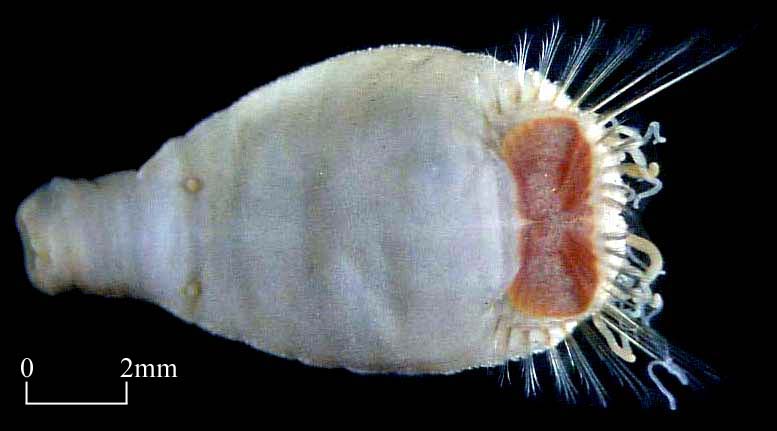Order Sternaspida
Family Sternaspidae
Features |
| Body: |
short, swollen, ovoid or dumb-bell shaped
body with indistinct segmentation; segment 7 with genital papillae; the next 8 segments
not visibly setose; the final segments covered by a stiff, chitinized, mineral-impregnated
shield surrounded with setae |
| Prostomium: |
small and no appendage |
| Eye: |
absent |
| Antennae: |
absent |
| Cirri: |
absent |
| Palp: |
2 |
| Pharynx: |
eversible and axial; can be inverted with
the first three segments which have rows of acicular setae |
| Parapodium: |
absent |
| Setea: |
simple including fine and smooth or
stouter and pilose capillaries |
| (Fauchald 1977) |
Biological Notes
Sternaspis is the only
genus known for this family. They are the most easily recognized polychaetes
with the dark yellow or reddish chitinized shield. They are common in sandy
and muddy substrates in all depths. They feed on buried organic matters and
burrow head downwards. The short, stout spines on the first three segments are
for digging. The entrance of the burrow is covered by the hard anal
plates. The filamentous gills can be extended into the water above (Day 1967).
Genera and Species Reported in Hong Kong
Sternaspis scutata |
